
Rossum Electro-Music / Linnaeus Black
Variations
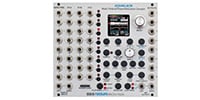
Back Order
Assimil8or シルバー
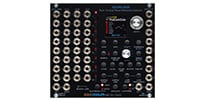
Back Order
Assimil8or ブラック
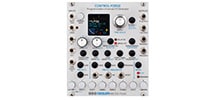
Back Order
Control Forge
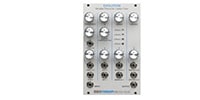
Back Order
Evolution Filter
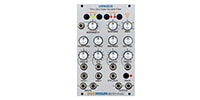
Back Order
Linnaeus シルバー
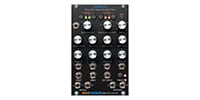
Back Order
Linnaeus ブラック
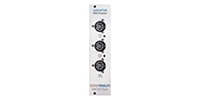
Back Order
Locutus シルバー
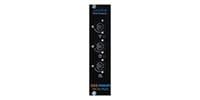
Back Order
Locutus ブラック
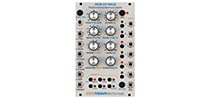
Back Order
Mob of Emus
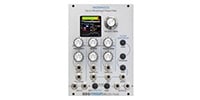
Back Order
Morpheus シルバー
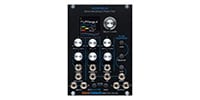
Back Order
Morpheus ブラック
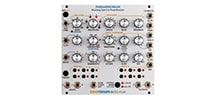
Back Order
Panharmonium シルバー
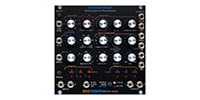
Back Order
Panharmonium ブラック
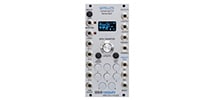
Back Order
Satellite
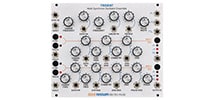
Back Order
Triton
Linnaeus is equipped with two newly designed through-zero state variable filters that make it possible to linearly modulate the resonance frequency from zero to negative frequencies while always maintaining stable operation. Extensive CV control for almost every parameter allows Linnaeus to control the filter's natural response curve in new ways, allowing you to create subtle or dramatic sound effects. Linnaeus also features a ""one knob per parameter"" interface, making it suitable for real-time interaction and inspiring creativity.
Linnaeus' cutoff/resonance frequency allows for exponential CV control from ultra-low frequencies below 20Hz to ultrasonic waves above 20,000Hz. At the same time, the resonant gain (Q) can be controlled exponentially from 0dB to over 60dB.
The characteristics of Linnaeus' two filters are independently and continuously variable from lowpass to bandpass, highpass, notch, low shelving, and high shelving characteristics. CV controls for the response characteristics are individually selectable for each of the two channels.
Linear through-zero modulation works with the internal modulation oscillator and/or an external linear FM modulation input.
A CV-controllable modulation oscillator can track the filter's linear frequency or operate independently. The modulation oscillator's output waveform changes continuously from off to sine, triangle, sawtooth, and square waves. The output of the modulation oscillator is summed with the external linear FM input and applied to the modulation index VCA. Modulation Index The VCA controls a linear through-zero modulation index from 0 to 8x. Of course, the modulation index can also be controlled by CV.
The features of Linnaeus are as follows.
Extremely wide frequency range with exponential CV control from sub-audio to ultrasound via accurate 1V/OCT and attenuable CV inputs.
Thru-zero linear frequency modulation via internal modulation oscillator and/or external linear FM input.
Variable linear modulation index, CV control via attenuable CV input.
Exponential CV controllable resonance (Q) from 0dB to over 60dB using 6dB/V and attenuable CV inputs.
Continuously variable response characteristics can be independently selected for each of the two channels using the Response Enable button. Characteristics include low pass (12db/oct and 6db/oct), bandpass, high pass (12db/oct and 6db/oct), notch, low shelving and high shelving.
CV control of response characteristics using attenuable CV input. Individual Response CV Enable buttons allow each channel's response to be individually enabled or disabled by CV.
Integrated modulation oscillator with continuously changing waveforms from off to sine, triangle, sawtooth, and square waves. Its frequency can be controlled exponentially using an attenuable CV input.
Track control that allows the modulation oscillator to precisely track the index frequency of the filter.
Stereo input and output. Linnaeus can process stereo signals or two independent mono signals. The two channels share a filter cutoff/resonance frequency, but the filter response characteristics can be controlled independently for each channel.
Like all Rossum Electro-Music modules, the Linnaeus is built to last with thick aluminum panels, solid aluminum knobs, and high-quality components.
Another feature of Linnaeus is “Ping mode”
The feature description above describes Linnaeus as originally conceived and designed by Dave. However, late in the beta testing process, our good friend and tester Chris Meyer from Rossum Electro-Music suggested the possibility of a ""Ping Mode"" that included some very powerful sound-generating features, allowing the Linnaeus to act as a self-contained (no input needed) stereo oscillator or FM percussion voice.
At first, we were hesitant to add new functionality to an existing interface, but after Dave created a prototype, we realized it was so cool that we had no choice but to include it in Linnaeus. Therefore, Ping mode comes in the form of an alternative firmware accessed by long-pressing or double-clicking the Egg button.
Width 16HP
Depth 25mm
Current consumption
+12V: 155mA
-12V: 36mA
関連商品
-
¥980(incl. tax)
 In Stock
In Stock -
¥10,800(incl. tax)
 In Stock
In Stock -
¥34,800(incl. tax)
 In Stock
In Stock -
 KORG / SQ-CABLE-6 PATCH CABLE for SQ-1 ミニパッチケーブル
KORG / SQ-CABLE-6 PATCH CABLE for SQ-1 ミニパッチケーブル¥1,970(incl. tax)
 In Stock
In Stock -
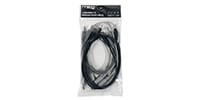 MOOG / S.M CABLE 8 6/12/18/24IN Modular patch cable
MOOG / S.M CABLE 8 6/12/18/24IN Modular patch cable¥4,950(incl. tax)
 Back Order
Back Order -
 Tiptop Audio / Stackable Cable White 20cm x 5
Tiptop Audio / Stackable Cable White 20cm x 5¥5,698(incl. tax)
 Back Order
Back Order -
 Tiptop Audio / Stackable Cable White 30cm x 5
Tiptop Audio / Stackable Cable White 30cm x 5¥5,698(incl. tax)
 Back Order
Back Order -
 Tiptop Audio / Stackable Cable White 50cm x 5
Tiptop Audio / Stackable Cable White 50cm x 5¥5,698(incl. tax)
 Back Order
Back Order -
 Tiptop Audio / Stackable Cable White 70cm x 5
Tiptop Audio / Stackable Cable White 70cm x 5¥6,050(incl. tax)
 Back Order
Back Order -
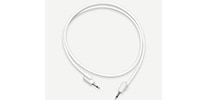 Tiptop Audio / Stackable Cable White 90cm x 5
Tiptop Audio / Stackable Cable White 90cm x 5¥6,050(incl. tax)
 Back Order
Back Order
商品レビューProduct Review
不適切な投稿として報告しますか?
理由
ご協力ありがとうございました
投稿を削除しますか?
投稿されたレビューを削除しました。
Rossum Electro-Music
Linnaeus Black
Item ID:349621
89,800 yen(incl. tax)
898Pt(1%)Detail
- 898Pts
通常ポイント
- 898Pts
Total
- In Stock
- In Stock, can be shipped when order is confirmed.
- Low Stock
- Low Stock, may be sold out soon.
- Scheduled date
- Expected to arrive at Sound House on this date.
- TBA
- Expected date of arrival at Sound House to be determined.
- Back Order
- It needs to be orderd from the manufacturer. Please inquire about the estimated date of arrival.
- Mfr. Delivery
- Must be ordered from manufacturer. Please inquire about the estimated date of arrival.
- Download
- Only the serial number will be sent to your registered email address.
- Special Order
- Made to order item or must be ordered from manufacturer. May take several weeks or months.
- No Longer Available
- Product is no longer available due to having been discoutined or other reasons.
Rating




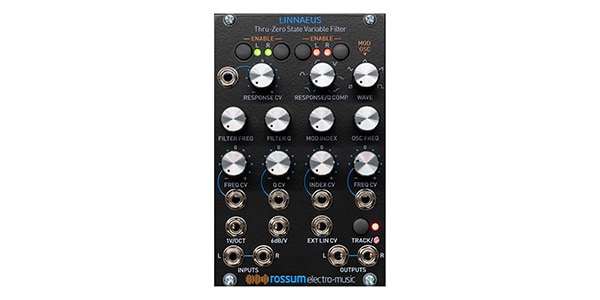


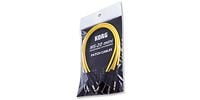 KORG / MS-CABLE-YL
KORG / MS-CABLE-YL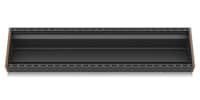 BEHRINGER / EURORACK 104
BEHRINGER / EURORACK 104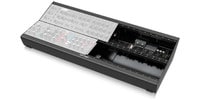 BEHRINGER / EURORACK GO
BEHRINGER / EURORACK GO






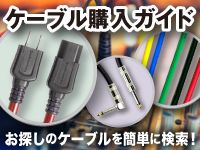










すべてのレビューを見る